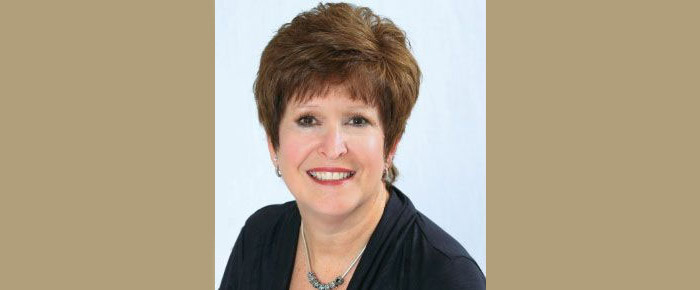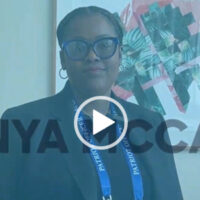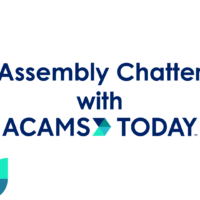
ACAMS Today had the opportunity to speak with Anna McDonald Rentschler, CAMS, about the challenges financial crime prevention professionals face and how they can drive change.
Rentschler is the vice president and the Bank Secrecy Act (BSA) officer for Central Bancompany, a $13+ billion holding company in Missouri and Oklahoma with branches in Kansas and Illinois, which has 13 bank charters under the holding company plus trust and mortgage companies. Rentschler has been affiliated with Central Bancompany for 36 years. In this role, she is responsible for the enterprise-wide development and oversight of BSA policy and procedures, overall enterprise-wide risk assessment, risk rating of accounts, suspicious activity reports (SARs), currency transaction reports, exemptions, the customer identification program, the new beneficial ownership guidance, interaction with law enforcement, Office of Foreign Assets Control guidance, etc. Rentschler received the 2008 Distinguished Service Award from the American Bankers Association (ABA) and the 2017 ACAMS AML Career Dedication Award.
ACAMS Today: How has the financial crime prevention profession evolved since you started your career and what does the role of the financial crime prevention professional look like in 2018?
Anna McDonald Rentschler: The BSA/anti-money laundering (AML) area has changed so much since I started working as an examiner years ago. Money laundering was not a primary area we looked at and it was not even in our thought patterns.
When I crossed over to the banking side (also many years ago), money laundering was not looked at too much either. The loan side mainly drove the bank’s analysis and secondary (very much further back) was the compliance side, mostly made up of disclosure issues. Thinking back, money laundering was not thought of much at all. I remember going to conferences where the compliance officers did not want know your customer (KYC) information. They feared that the privacy issue and the resources it would take might cause a problem. We, as bankers, pushed back and won—or did we? Then came 9/11 and we woke up! We in the BSA/AML area understand that we now need to catch up and assess the risk, along with all of the other BSA/AML areas. But, our requests often fell on deaf ears in the banks we served. We are growing and adding, but loan profitability is still king. Not that it should not be, but we are involving money laundering in this area too.
AT: Nowadays, there is a sentiment in the industry that we need to keep up with change, whether it is with technology or with the latest criminal scheme. What changes should financial crime professionals implement to better combat money laundering, terrorist financing and other financial crimes?
AMR: The regulators/auditors tend to look at the checkbox issues and forms, in addition to having the check-box mentality, while law enforcement looks at what they need. Therefore, financial crime prevention professionals are spending too much time doing what our regulators say, while the bad guys are stealing us blind! Law enforcement numbers are down because of budget issues, so law enforcement officials have to look at the total dollar amount and/or types of issues we are writing about in SARs. Right or wrong, we need to pick up the phone if it is a major concern and deal with the issues, find out what they have an interest in and have a discussion about what they really need to follow the money! Meanwhile, local law enforcement needs to be apprised of what is going on in the beltway. They (too often) do not even know what is being debated in Washington, D.C. We are doing some things for them, but it is not what they really need and they still do not know what is coming.
AT: Let us change focus and discuss the CDD Rule. What are the challenges financial institutions are facing during the final stages of the CDD Rule implementation?
AMR: The IT and training areas are a major concern for us. We are spending a lot of time trying to obtain and document all of the areas that are required regarding the beneficial ownership governance. In addition, we are training all front-line and lending staff (plus others) to ask the right questions and to document what is needed when we have a new account opened or if a trigger event is reached. It has to be retained on the system (or somewhere that it can be located for smaller banks), so that future ‘triggering’ events can follow what they have—right or wrong. In addition, we need to know our customers, what is expected and who is their controller—the puppet master.
What we would really like is guidance. There are several questions we would like answered, but the lack of guidance is of great concern. Regulators might be trained, but we feel like “the tail is wagging the dog” in many aspects. We are documenting the process we will follow and asking if it is right. For us it is right, but is it what the regulators want? So, we “cuss and discuss” the issues, document our reasoning and hope that the regulators understand where we are coming from. Yes, they say that implementation time will be allotted before we are criticized, but “it takes a great deal of time to turn that aircraft carrier around.”
AT: Could you give us examples of what specific questions you would like answered or what type of guidance would be beneficial to assist with better implementation of the CDD Rule?
AMR: Is it okay to solely document the beneficial owner—not the interim business owners? What is right when combining currency transaction reports (CTRs)? What if the interim process is an Office of Foreign Assets Control (OFAC) match—do we use the 50 percent rule? Is it correct to report a 314(a) match, when it is not specifically stated? What are some of the triggers that regulators want us to develop? There are many issues to consider.
AT: Also, what role is technology playing in the implementation of the CDD Rule?
AMR: Technology is huge—we have to obtain, review and update when the beneficial owners are triggered and document this process. However, for smaller banks, they might not have the IT focus as larger banks do. They still need the information to carry the process forward. Many of the mid-sized banks have IT departments, but must wait to get in line for their services. In addition, many of these banks rely on vendors to run their processes. I am not sure how many times I have heard that we are the first to bring this to their attention. Au contraire! The vendors have to keep their eye on the ball too! But, it is the bank’s ultimate liability and it takes a long time to change vendors—but, we will!
AT: I have had the privilege of interviewing you a few times and publishing some of your articles. In your 2014 ACAMS Today article How Can You Not?, you stated that human trafficking (HT) education is one of your passions. Where are we now four years later with HT education?
AMR: HT is finally getting known around the U.S. In addition, Congress is even getting in the game (state and federal) and they act like it is new, but it has been around for centuries. HT is not only in foreign countries or large cities, but it is in small towns (anywhere) as well. We are so lucky that we have workers in the anti-HT field that are involved every day! I play a small role as an educator in this endeavor, but even if I educate just one person it may result in saving one victim. That is a win! I encourage everyone to be knowledgeable, to educate others, to look around and tell someone if something does not look right.
AT: You are retiring this year, what is the best advice you can give to those working in the financial crime prevention industry?
AMR: My best advice to BSA/AML professionals is to stay ahead of the game. Ramp up your bank and your processes. You, as a BSA/AML professional, are in demand. If you love it as I have, keep it going to catch the bad guys. In addition, get involved, ask your banking associations if you want to become involved and be accessible. If you are not willing to say what you have done or to toot your own horn, no one else will. Many will take credit for the work you have done. So, do it for you!
AT: Thank you for your sage advice. Do you plan to stay involved in the compliance field after retirement?
AMR: Yes, retirement is on the horizon, much sooner than later. Am I going to stay involved in the BSA/AML field? Not directly. I will spend a large amount of time with my grandkids, work at the United Way of Audrain County (I have always been a huge United Way supporter), and hope to be able to spend more time in the anti-HT area and the local coalition in Columbia, MO. Oddly enough, banking often has the effect of taking a lot of that time away.
I have really enjoyed the BSA/AML field and I will miss it and the people in the banks and organizations that I have been involved with, but it is time to retire.










